| Date | Text | |
|---|---|---|
30 Nov 1917
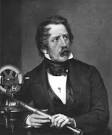
Kiyotsugu Hirayama |
Kiyotsugu Hirayama (astronomy) Kiyotsugu Hirayama identifies several groups of main belt asteroids, now known as Hirayama families. |
|
30 Nov 1917

Harlow Shapley |
Harlow Shapley (astronomy) Harlow Shapley demonstrates that globular clusters are arranged in a spheroid or halo whose center is not the Earth, but the center of the galaxy. |
|
30 Nov 1917

Max Wolf |
Max Wolf (astronomy) Max Wolf discovers the star Wolf 359. |
|
30 Nov 1917

Heber Curtis |
Heber Curtis (astronomy) Heber Curtis discovers a relativistic jet of matter emerging from Elliptical galaxy M87. |
|
30 Nov 1917

R. A. Fisher |
R. A. Fisher (biology) R. A. Fisher puts forward a genetic model that shows that continuous variation could be the result of Mendelian inheritance in his paper "The Correlation Between Relatives on the Supposition of Mendelian Inheritance". |
|
30 Nov 1917

J. Henri Fabre |
J. Henri Fabre (biology) J. Henri Fabre's The Sacred Beetle, and others published in English. |
|
30 Nov 1917
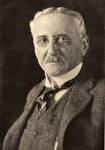
Jacques Loeb |
Jacques Loeb (biology) Jacques Loeb's Forced Movements, Tropisms, and Animal Conduct published in the United States. |
|
30 Nov 1917

Edward Hugh Hebern |
Edward Hugh Hebern (cryptography) Edward Hugh Hebern patents the Hebern rotor machine. |
|
30 Nov 1917

Technisches Museum Wien |
Technisches Museum Wien (history of science) Technisches Museum Wien opens in Vienna. |
|
30 Nov 1917
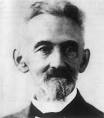
Felix Hausdorff |
Felix Hausdorff (mathematics) Felix Hausdorff introduces the concept of the fractional Hausdorff dimension. |
|
30 Nov 1917

Gaston Julia |
Gaston Julia (mathematics) Gaston Julia describes the iteration of a rational function. |
|
30 Nov 1917

Josef Lense |
Josef Lense (physics) Josef Lense and Hans Thirring find the gravitomagnetic precession of gyroscopes in the equations of general relativity. |
|
30 Nov 1917

Hans Reissner |
Hans Reissner (physics) Hans Reissner and Gunnar Nordström solve the Einstein and Maxwell field equations for charged spherically-symmetric non-rotating systems. |
|
30 Nov 1917

Friedrich Kottler |
Friedrich Kottler (physics) Friedrich Kottler gets Schwarzschild solution without Einstein vacuum field equations. |
|
30 Nov 1917
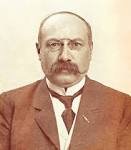
Hartog Jacob Hamburger |
Hartog Jacob Hamburger (physiology and medic) Hartog Jacob Hamburger describes the chloride shift. |
|
30 Nov 1917

Edwin Armstrong |
Edwin Armstrong (technology) Edwin Armstrong invents the superheterodyne receiver. |
|
30 Nov 1917
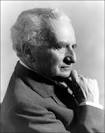
Theodore von Karman |
Theodore von Karman (technology) Theodore von Karman and Asbóth Oszkár build the first co-axial helicopter. |
|
30 Nov 1917

A. M. Nicolson |
A. M. Nicolson (technology) A. M. Nicolson invents the radio crystal oscillator |
|
30 Nov 1917

Charles Strite |
Charles Strite (technology) Charles Strite invents the pop-up toaster. |
|
01 Jan 1918
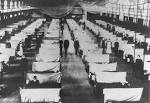
1918 flu pandemic |
1918 flu pandemic (physiology and medic) 1918 flu pandemic: "Spanish 'flu" (influenza) first observed in Haskell County, Kansas. |
|
06 Jan 1918
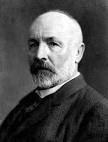
Georg Cantor |
death Georg Cantor Georg Cantor (born 1845), mathematician. |
|
23 Jan 1918
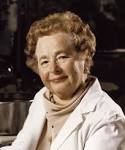
Gertrude B. Elion |
birth Gertrude B. Elion Born 23 Jan 1918; died 21 Feb 1999 at age 81. Gertrude Belle Elion was an American pharmacologist who shared the Nobel Prize for Physiology or Medicine in 1988 (with George H. Hitchings and Sir James W. Black) for the development of drugs used to treat several major diseases. Research by Elion and Hitchings produced the first drugs specifically designed for cancer therapy, as well as drugs to combat rejection of transplanted organs, gout, malaria and bacterial and viral infections. These medications became well-proven in use over many years, and their drugs appeared on the World Health Organizations's list of so-called "Essential Drugs" as medicines which should be available worldwide to promote "Health for All." Elion held 45 patents. |
|
26 Jan 1918
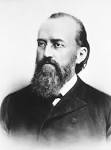
Ewald Hering |
death Ewald Hering Ewald Hering (born 1834), physiologist. |
|
27 Jan 1918

Antonín Mrkos |
birth Antonín Mrkos Antonín Mrkos (died 1996), astronomer. |
|
31 Jan 1918

Ivan Pulyui |
death Ivan Pulyui Ivan Pulyui (born 1845), physicist. |
|
05 Feb 1918

Edison car starter patent |
Edison car starter patent In 1918, Thomas A. Edison was issued a U.S. patent for a "Starting and Current-Supplying System for Automobiles" (No. 1,255,517). |
|
21 Feb 1918
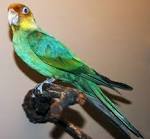
Carolina Parakeet |
Carolina Parakeet (biology) The last known Carolina Parakeet (the only parrot species native to the eastern United States) dies in Cincinnati Zoo. |
|
23 Feb 1918

Arthur Scherbius |
Arthur Scherbius (cryptography) Arthur Scherbius applies to patent the Enigma machine. |
|
14 Mar 1918
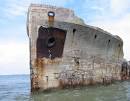
Concrete ship |
Concrete ship In 1918, the first US concrete seagoing ship was launched at Redwood City, California. |
|
16 Mar 1918

Frederick Reines |
birth Frederick Reines Frederick Reines (died 1998), physicist. |
|
26 Mar 1918
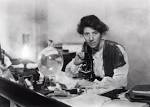
Marie Stopes |
Marie Stopes (physiology and medic) Dr. Marie Stopes publishes her influential book Married Love in the U.K., following it with Wise Parenthood, a treatise on birth control. |
|
31 Mar 1918
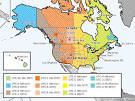
U.S. daylight saving time |
U.S. daylight saving time In 1918, the U.S. first began daylight saving time (DST) on Easter Sunday, when clocks were set ahead by one hour. The idea was sponsored by the Daylight Savings Association. N.Y. Senator William M. Calder introduced the bill to Congress on 17 Apr 1917. It was initially defeated, but subsequently passed by roll-call on 27 Jun 1917. In recent years in the U.S., up to 2006, clocks were changed at 2 a.m. on the first Sunday in April, and reverted on the last Sunday of October. Effective in 2007, DST is set by Congress to begin on the second Sunday of March and end the first Sunday of November. The concept had already been introduced in Great Britain as a fuel-saving measure during wartime, in order to conserve coal stocks during WW I. |
|
04 Apr 1918

Joseph Ashbrook |
birth Joseph Ashbrook Joseph Ashbrook (died 1980), astronomer. |
|
20 Apr 1918

Karl Ferdinand Braun |
death Karl Ferdinand Braun Karl Ferdinand Braun (born 1850), physicist. |
|
25 Apr 1918

Gerard Henri de Vaucouleurs |
birth Gerard Henri de Vaucouleurs Born 25 Apr 1918; died 7 Oct 1995 at age 77. French-born U.S. astronomer whose pioneering studies of distant galaxies contributed to knowledge of the age and large-scale structure of the universe. He produced three Reference Catalogues of bright galaxies (1964, 1976, 1991). Each was a homogenization of data from widely different sources, so that the catalogues would not be merely finding lists or data collection lists, but astrophysically useful databases. Using data in the Reference Catalogues, he was able to develop new distance indicators and refine others. His unique philosophy on distance matters was "spreading the risks," that is, applying as many different and independent techniques as possible to check for scale and zero-point errors. |
|
25 Apr 1918

Gérard de Vaucouleurs |
birth Gérard de Vaucouleurs Gérard de Vaucouleurs (died 1995), astronomer. |
|
01 May 1918
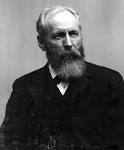
G. K. Gilbert |
death G. K. Gilbert G. K. Gilbert (born 1843), geologist. |
|
11 May 1918

Richard Feynman |
birth Richard Feynman Richard Feynman (died 1988), physicist, Nobel laureate. |
|
19 May 1918

Abraham Pais |
birth Abraham Pais Born 19 May 1918; died 28 Jul 2000 at age 82. Dutch-American physicist and science historian whose research became the building blocks of the theory of elemental particles. He wrote Subtle Is the Lord: The Science and Life of Albert Einstein, which is considered the definitive Einstein biography. In Holland, his Ph.D. in physics was awarded on 9 Jul 1941, five days before a Nazi deadline banning Jews from receiving degrees. Later, during WW II, while in hiding to evade the Gestapo, he worked out ideas in quantum electrodynamics that he later shared when working with Niels Bohr (Jan - Aug 1946). In Sep 1946, he went to the U.S. to work with Robert Oppenheimer at Princeton, where Pais contributed to the foundations of the modern theory of particle physics. |
|
31 May 1918

Alexander Mitscherlich |
death Alexander Mitscherlich Alexander Mitscherlich (born 1836), chemist. |
|
01 Jun 1918
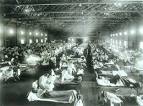
Spanish 'flu |
Spanish 'flu (physiology and medic) August – "Spanish 'flu" becomes pandemic. |
|
06 Jun 1918

Edwin G. Krebs |
birth Edwin G. Krebs Edwin G. Krebs (died 2009), Nobel Prize-winning American biochemist. |
|
08 Jun 1918
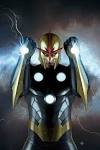
Nova |
Nova (astronomy) Nova Aquila, the brightest observed since 1604, is discovered. |
|
25 Jun 1918
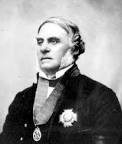
James Douglas |
death James Douglas Died 25 Jun 1918 at age 80 (born 4 Nov 1837). Canadian-American metallurgist, mining engineer and philanthropist who developed the copper mining industry in the U.S. Southwest. He was co-inventor of the Hunt-Douglas process for copper extraction, which brought him to the attention of the Phelps-Dodge Corp. In 1881, he examined copper ore deposits in Arizona for the company which then from 1885 operated the Copper Queen Mine, at Bisbee, Arizona. Under Douglas, it became one of the top copper producing mines in the U.S. He grew wealthy, and became the president of Phelps-Dodge 1908-18. The company built the El Paso and Southwestern Railroad (from 1887) to transport its ore. He founded a huge smelting centre at the town of Douglas, Ariz., named for him. |
|
27 Jun 1918

George Mary Searle |
death George Mary Searle George Mary Searle (born 1839), astronomer. |
|
29 Jun 1918

Alfred Senier |
death Alfred Senier Alfred Senier (born 1853), chemist. |
|
15 Jul 1918

Bertram N. Brockhouse |
birth Bertram N. Brockhouse Born 15 Jul 1918; died 13 Oct 2003 at age 85. Canadian physicist who developed neutron diffraction techniques used for studying the structure and properties of matter for which he shared the Nobel Prize for Physics in 1994 (with American physicist Clifford G. Shull). By devising instrumentation to measure the energy of neutrons scattered from a solid material, Brockhouse provided insight to its atomic structure. It made possible advances in semiconductor technology. His Triple-Axis Neutron Spectrometer is now widely used not only to investigate atomic structures, but also virus and DNA molecules. |
|
16 Jul 1918

Samuel Victor Perry |
birth Samuel Victor Perry Samuel Victor Perry (died 2009), English biochemist who was a pioneer in the field of muscle biochemistry. |
|
13 Aug 1918
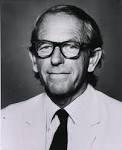
Frederick Sanger |
birth Frederick Sanger Frederick Sanger (died 2013), double Nobel Prize-winning English molecular biologist. |
|
24 Aug 1918

Ray McIntire |
birth Ray McIntire Born 24 Aug 1918; died 2 Feb 1996 at age 77. U.S. chemical engineer who inadvertently created what became known as Styrofoam while working for the Dow Chemical Co., where he was attempting to develop a rubberlike polymer to be used as a flexible insulator. |
|
29 Aug 1918

John Herivel |
birth John Herivel John Herivel (died 2011), cryptanalyst and science historian. |
|
07 Sep 1918
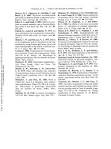
J. B. Christopherson |
J. B. Christopherson (physiology and medic) J. B. Christopherson publishes his discovery that antimony potassium tartrate is an effective cure for bilharzia. |
|
07 Sep 1918

Peter Ludwig Mejdell Sylow |
death Peter Ludwig Mejdell Sylow Peter Ludwig Mejdell Sylow (born 1832), mathematician. |
|
27 Sep 1918

Martin Ryle |
birth Martin Ryle Martin Ryle (died 1984), astronomer. |
|
04 Oct 1918
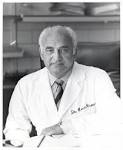
Adrian Kantrowitz |
birth Adrian Kantrowitz Adrian Kantrowitz (died 2008), cardiac surgeon. |
|
28 Oct 1918

Ulisse Dini |
death Ulisse Dini Ulisse Dini (born 1845), mathematician. |
|
03 Nov 1918

Aleksandr Lyapunov |
death Aleksandr Lyapunov Aleksandr Lyapunov (born 1857), mathematician and physicist. |
|
10 Nov 1918

Ernst Otto Fischer |
birth Ernst Otto Fischer Ernst Otto Fischer (died 2007), chemist, Nobel laureate. |
|
19 Nov 1918

Charles Richard Van Hise |
death Charles Richard Van Hise Died 19 Nov 1918 at age 61 (born 29 May 1857). U.S. geologist who conducted basic geological studies of the Precambrian (570,000,000 to 4,600,000,000 years ago) formations of the Lake Superior region, particularly the iron ores in these formations. These studies were useful for the economic exploitation of the vast iron-ore fields found in that region. He was very interested in, and wrote about, the conservation of natural resources. He regarded soil conservation as "the basal asset of the nation," followed by the "economic mining and use of coal, the conservation of the forests, and the use of metals with the minimum waste." |
|
19 Nov 1918
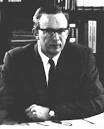
Hendrik Christoffel Van de Hulst |
birth Hendrik Christoffel Van de Hulst Born 19 Nov 1918; died 31 Jul 2000 at age 81. Dutch astronomer who predicted theoretically (1944) that in interstellar space the amount of neutral atomic hydrogen, which in its hyperfine transition radiates and absorbs at a wavelength of 21 cm, might be expected to occur at such high column densities as to provide a spectral line sufficiently strong as to be measurable. Shortly after the end of the war several groups set about to test this prediction. The 21-cm line of atomic hydrogen was detected in 1951, first at Harvard University followed within a few weeks by others. The discovery demonstrated that astronomical research, which at that time was limited to conventional light, could be complemented with observations at radio wavelengths, revealing a range of new physical processes. |
|
19 Nov 1918

Hendrik C. van de Hulst |
birth Hendrik C. van de Hulst Hendrik C. van de Hulst (died 2000), astronomer. |
|
29 Nov 1918

Thomas Allinson |
death Thomas Allinson Thomas Allinson (born 1858), physician and dietetic reformer. |
|
01 Dec 1918

John R.F. Jeffreys |
birth John R.F. Jeffreys John R.F. Jeffreys (died 1944), mathematician and cryptanalysist. |
|
25 Dec 1918

Tamara Mikhailovna Smirnova |
birth Tamara Mikhailovna Smirnova Tamara Mikhailovna Smirnova (died 2001), astronomer. |
|
26 Dec 1918

William Hampton Patton |
death William Hampton Patton William Hampton Patton (born 1853), entomologist. |
|
27 Dec 1918

Birt Acres |
death Birt Acres Birt Acres (born 1854), pioneer of cinematography. |